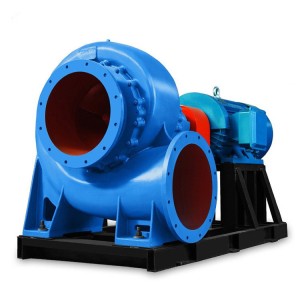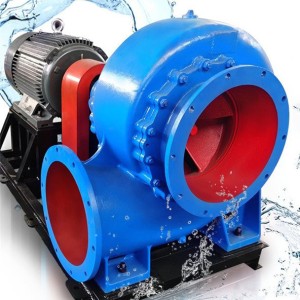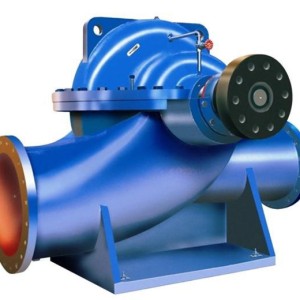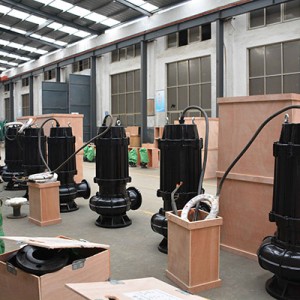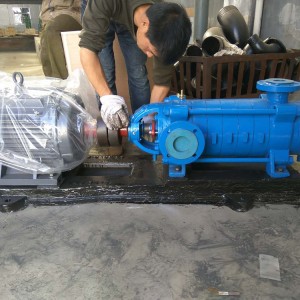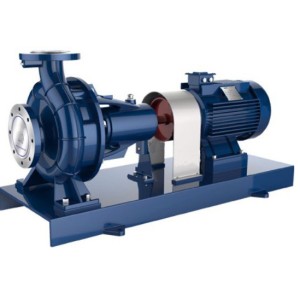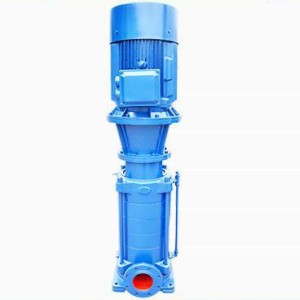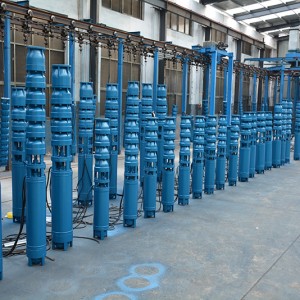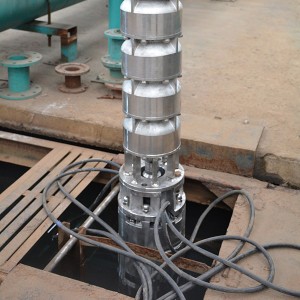Generally, in the sealing occasions where there is contaminated process fluid, the common contact type double-end mechanical seal is mainly used. Between the two seals, the blocking fluid whose pressure is higher than the pressure of the sealed medium is injected through the blocking fluid auxiliary system to prevent the sealed medium from entering the outside world. leakage. However, in practical engineering applications, failures often occur due to many reasons and cannot effectively prevent the leakage of the sealed medium, especially for process pumps that convey solid particles, frequently start and stop, and are easy to evacuate, and the sealing is reliable.
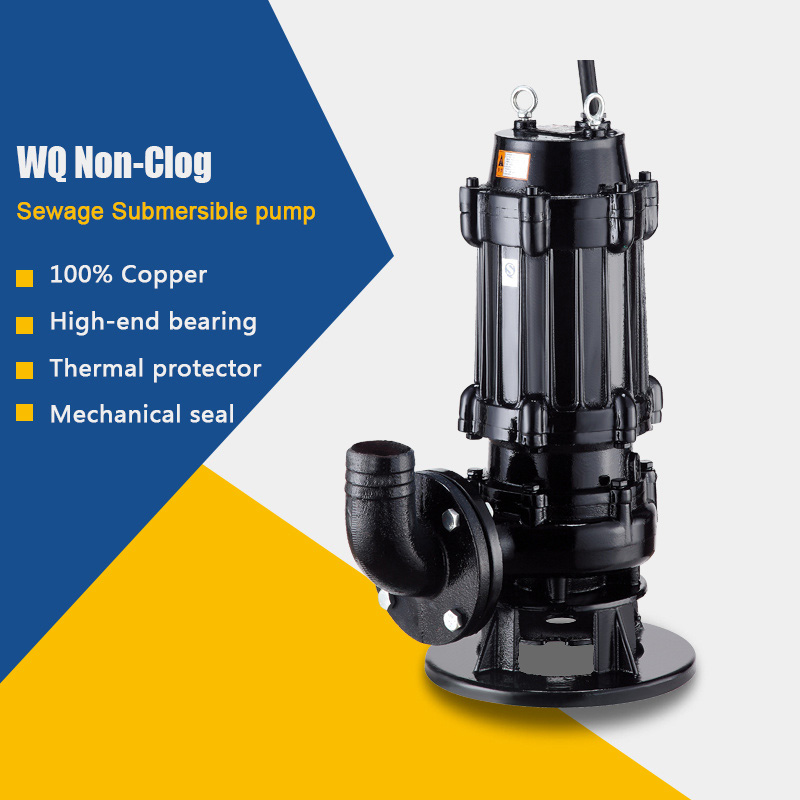
1. Sealing parameters of submersible sewage pump
For example: The pump model is WQ30-35-7.5. In normal operation, the inlet pressure is close to normal pressure, the outlet pressure is 0.55MPa, and the delivery temperature is normal temperature. The mechanical seal used is a double-end face with a multi-spring balance structure. The inner diameter of the seal face is 35.2mm, the outer diameter is 44.2mm, the end face width is 4.5mm, and the balance diameter is 36.8mm.
2. Matters needing attention
①The formula for calculating the specific pressure of the cone mechanical seal is the same as that of the end mechanical seal.
② Pay attention to the relationship between K and the contact bus L in the design. When the static ring of the cone mechanical seal is worn out, the contact bus length L increases continuously, which makes the load factor K continue to decrease. The relationship curve between the length of the contact bus bar L and the load coefficient K. During operation, the unloading caused by the wear of the static ring and the decrease of the K value reduces the seal specific pressure Pc. When leakage occurs, the spring compression must be adjusted (spring Load) to maintain sufficient seal specific pressure.
③Spring specific pressure is one of the important parameters that affect the sealing performance and service life of the mechanical seal. The main function of the spring specific pressure is to ensure that the sealing surface fits well when the pump is started, operated and stopped; the sealing surface is worn and the sealing sleeve is worn. When vibration and movement are generated, it is used to overcome the friction between the O-shaped sealing ring and the inner surface of the pump body sealing cavity when the sealing sleeve moves axially, and plays a role of compensation and buffering. When the mechanical seal is in operation, the spring is generally no longer adjusted. The spring plays the dual role of compensating for the unloading of the seal ring’s wear and reducing the K value in the conical mechanical seal. Correctly determining the spring specific pressure in the design is an important part of ensuring the seal performance and service life.
Practice has proved that the cone mechanical seal is particularly suitable for the seal containing particulate media. The modified sealing structure has a reliable seal, the pump does not leak during operation, and is easy to adjust and maintain. The sealing performance is improved, the operation cycle is prolonged, and the maintenance cost is saved.
In the conical mechanical seal, the spring plays a dual role of compensating for the seal ring wear and the decrease in the specific pressure of the seal caused by the decrease of the K value. The specific pressure of the spring must be correctly determined. In the cone seal, the load factor K is a variable, and this problem must be paid attention to in the design.
3. Modification of sealing structure
Since the cone mechanical seal is particularly suitable for pumping equipment containing solid suspensions, the sealing surface is changed to a cone seal. The static ring material is filled with PTFE, the movable ring material is stainless steel, and the cone surface is sprayed with tungsten carbide. Its main features are as follows.
①The length of the busbar of the sealing contact surface is very short (0.3~0.5mm in the initial stage of stable operation), so the temperature difference between the inside and outside of the contact surface is small, the temperature rise is low, and the degree of adhesive wear is reduced. The static ring has a large compressive section and small pressure deformation.
②The moving ring of the cone mechanical seal is a cone ring, and its half cone angle is the mouth; the inner diameter D1 of the static ring is a fixed value, as the static ring wears, the contact bus length L increases, and the outer diameter D2 of the static ring also increases. The increase.
③ Both the sealing sleeve and the moving ring have a certain degree of floating, which can keep the sealing surface in good contact at all times, and the suspended particles in the medium cannot easily enter the sealing surface.
④ The direction of the medium leakage is at an angle to the direction of its centrifugal force, which is beneficial to reduce leakage.
Fourth, the problems existing under working conditions
①The pressure of the isolation fluid is less than the pressure of the sealed medium. In order to ensure the sealing function of the double end face seal, it is theoretically required
The pressure of the isolation fluid must be 0.1~0.15MPa higher than the pressure of the sealed medium to prevent the leakage of the medium with certain toxicity. However, in actual engineering, the pressure of the isolation fluid is not greater than 0.3MPa, and less than the pressure of the sealed medium 0.55MPa, so the sealing effect is not ideal.
②In the state of frequent start and stop. When the liquid in the sewage storage tank is pumped, the pump automatically stops running, and when the liquid in the storage tank reaches the specified level, the pump automatically switches to the running state. It is precisely because the pump is in the state of frequent start and stop that the mechanical seal appears periodic and unstable dry friction state, which is also one of the main reasons for frequent seal failure.
③The conveying medium contains a large amount of solid particles. Because the submersible sewage pump discharges various process fluids (including a large amount of cooling water) from the process device into the storage tank regularly to the sewage treatment station for purification treatment, which contains a certain proportion of Impurity solid particles can easily enter between the end faces of the seal to cause severe abrasive wear and make the seal fail early. If the isolation fluid auxiliary system does not work normally, when the pressure of the isolation fluid is lower than the pressure of the sealed medium, solid particles will enter between the end faces of the inner seal, and the probability of failure will greatly increase.
④ The pump is easy to evacuate. Because the pump is in a state of frequent start and stop, when the liquid level in the storage tank drops to a certain level, it is easy to cause the pump to evacuate, resulting in severe vibration and noise. This phenomenon will inevitably lead to the failure of the seal. With stable working conditions, the possibility of seal failure is greatly increased.
Based on the above analysis, it can be known that due to the limitation of its own sealing principle and the particularity of working conditions, it is difficult to ensure the long-term safe operation of the seal under such environmental conditions. Moreover, under stable working conditions, although the use of double end seals or series seals can basically eliminate the leakage of the sealed medium, the sealing auxiliary system is complicated, the operating cost is greatly increased, and the reliability of the auxiliary system directly affects the use of the seal Effect.
Post time: 2021-12-13


